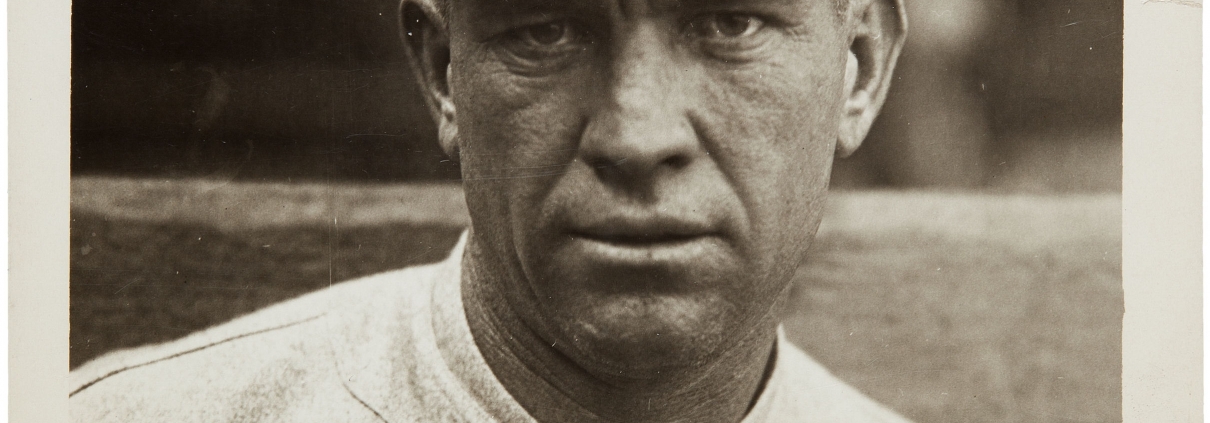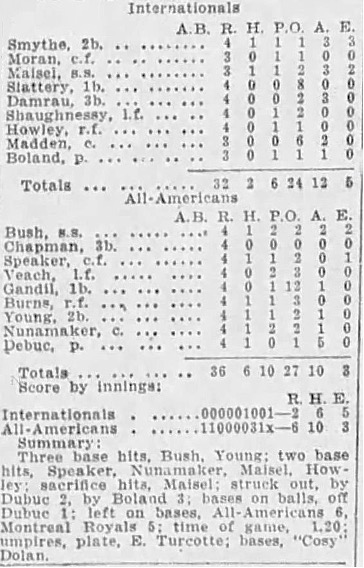October 6, 1916: Tris Speaker, All-Star American Leaguers defeat International League in Canada’s capital
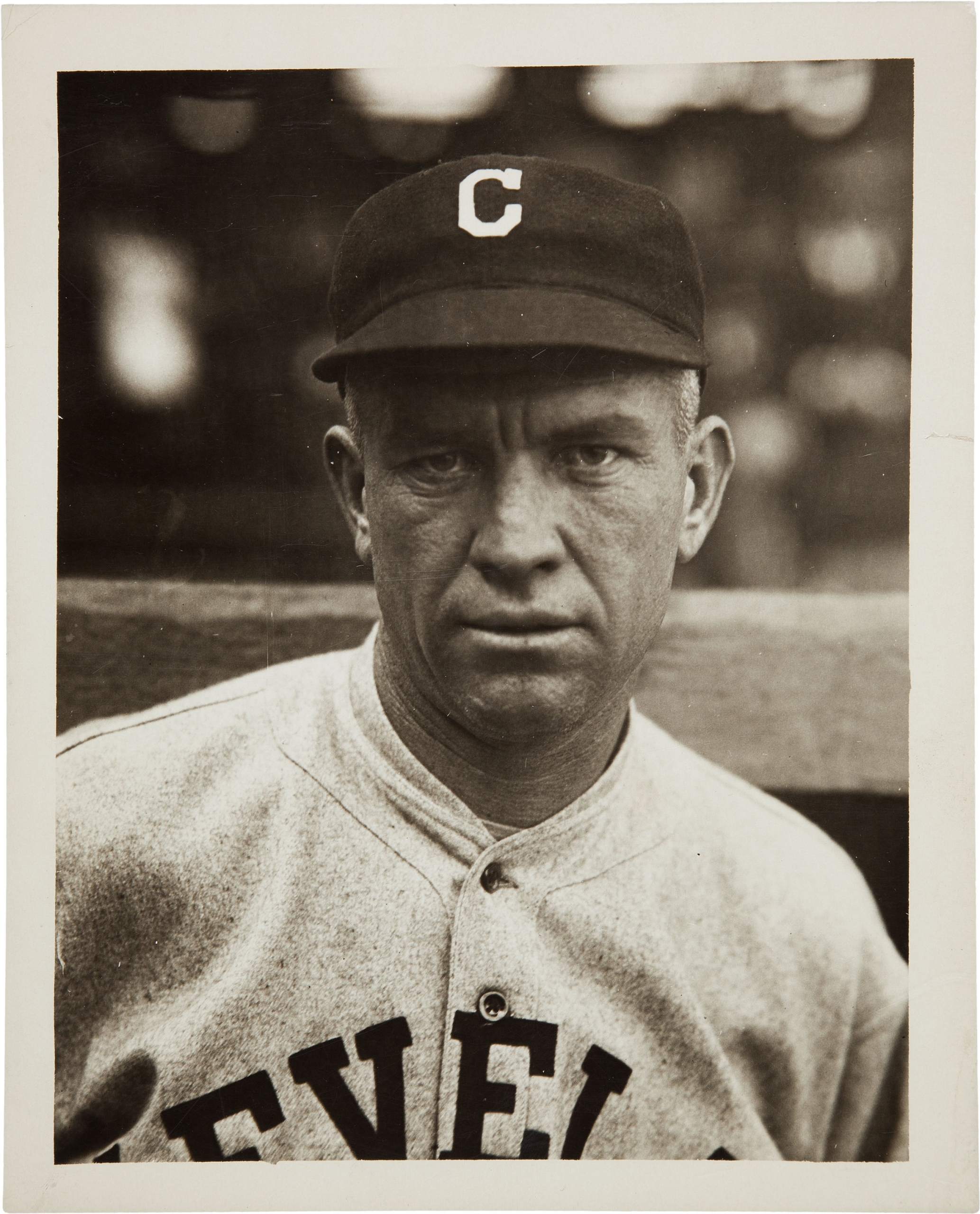 The mood in Ottawa was somber in the fall of 1916, more than two years after Canada had declared war on Germany. The bloody Battle of the Somme in northern France was into its fourth month, and a lengthy list of the local soldiers killed, wounded, or missing in action appeared daily in the Ottawa newspapers.1
The mood in Ottawa was somber in the fall of 1916, more than two years after Canada had declared war on Germany. The bloody Battle of the Somme in northern France was into its fourth month, and a lengthy list of the local soldiers killed, wounded, or missing in action appeared daily in the Ottawa newspapers.1
The residents of Canada’s capital were offered a brief respite from their troubles on October 6, when the All-Star American Leaguers – featuring future Hall of Famer Tris Speaker – played an exhibition game at Lansdowne Park as part of a brief barnstorming tour. The AL squad faced a team of mostly International League players, including Ottawa baseball legend Frank “Shag” Shaughnessy and former Ottawa Senators star Urban Shocker.2 Boosted by a six-hit complete game from Detroit Tigers hurler Jean Dubuc, the big-leaguers defeated the International Leaguers, 6-2, in front of about 5,000 fans, with hundreds more watching from the nearby Bank Street Bridge.3
Ottawa fans were keen to attend the exhibition contest after experiencing their first summer without minor-league baseball since 1911. The Ottawa Senators had been part of the Canadian League from 1912 to 1915, winning the league championship in all four seasons.4 With the outbreak of World War I, a scaled-back Canadian League operated for the 1915 season,5 and in the spring of 1916, the league was barely hanging on. When the new 207th (Ottawa-Carleton) Battalion began using Lansdowne Park as a training ground in April, the Senators were left without a home, and the league suspended operations for the 1916 season.6
The four-game tour was the brainchild of Dubuc, an offseason resident of Montreal.7 Two of the games were played in his hometown and were organized by Montreal Royals player-manager Dan Howley and sports promoter Léo Dandurand.8 The two other games were played in Ottawa and were arranged by Shaughnessy,9 former president of the Ottawa Senators and their popular player-manager in 1913-15.10
Organizers had insisted that the series was not a barnstorming tour. “These have been frowned on by both the National and American Leagues as well as the [National] Commission. The teams are simply coming, at the suggestion of Montreal and Ottawa baseball lovers, to give a few exhibition games before people, who have never had an opportunity to see them play,” the Ottawa Citizen noted unconvincingly.11
The American Leaguers included seven of Dubuc’s teammates on the third-place Tigers,12 three members of the Cleveland Indians, and New York Yankees catcher Les Nunamaker.
It was clear that Speaker, a two-time World Series champion (1912, ’15) and the winner of the AL Chalmers (MVP) Award in 1912, was the star attraction.13 The Boston Red Sox had traded the 28-year-old slugger to Cleveland on April 9 after a contract dispute with team owner Joe Lannin.14 He enjoyed an outstanding season with the Indians, hitting a major-league-leading .386 and snapping Ty Cobb’s streak of nine consecutive batting titles. But Speaker found himself in Ottawa on October 6 instead of with his old Boston teammates, who were preparing to face the Brooklyn Robins in the World Series.
The other Cleveland players on the team were the ill-fated pair of Ray Chapman and Chick Gandil.15
Prior to the outbreak of war, Ottawa civil servants could leave work early to attend Senators games, and crowds of up to 7,000 fans would jam Lansdowne Park.16 They were no longer afforded that luxury, which kept the attendance for the exhibition game below the city’s high-water mark.17 The 207th Battalion attended the contest and the soldiers – nearing their deployment overseas – were vigorously cheered by the crowd.18 The regiment’s brass band also entertained the fans throughout the game.19
Dubuc, a 28-year-old righty, got the start for the American Leaguers. After winning 62 games in his first four seasons with the Tigers, his record fell to 10-10 in 1916 with a middling 2.96 ERA.20
The International Leaguers had planned on starting Shocker until he decided to take a side trip to Boston to attend Game One of the World Series.21 Bernie Boland, on loan from Dubuc’s squad, took to the mound instead.22 The 24-year-old right-hander had gone 10-3 with a 3.94 ERA in 9 starts and 37 relief appearances with the Tigers.
Speaker received a nice round of applause when he came to the plate in the bottom of the first inning. (The fans gave Shaughnessy a much louder ovation a few minutes later.23) Speaker reached on an error by second baseman Jim “Red” Smyth and scored the game’s first run on a two-out single by Bobby Veach,24 the major leagues’ preeminent RBI man over the previous two seasons.25
Twenty-three-year-old George Burns, playing in right field instead of his usual first base, singled off Boland in the second.26 After Ralph Young reached on an error by shortstop George Maisel,27 Nunamaker singled to center field, scoring Burns.
Neither team scored in innings three through five, and the American Leaguers took a 2-0 lead into the sixth.
After Smyth, who batted .344 for the Royals,28 opened the sixth with a single, veteran Herbie Moran, a key member of the 1914 Miracle Braves, walked. (It was the only free pass issued in the game.) Both baserunners moved up 90 feet on Maisel’s sacrifice, and Smyth cut the AL’s lead in half when he scored on Joe Slattery’s groundout.
The ALers broke the game open in the seventh. With one out and two runners on base, Donie Bush brought them both home with a triple into center field. Bush scored on Chapman’s groundout, and the big-leaguers led, 5-1.
An inning later, Young scored to extend the lead to 6-1.29
In the ninth, Maisel drove a ball over Speaker’s head in center field for a double. Speaker threw the ball over Chapman’s head at third and Dubuc had to retrieve it; Maisel kept running and he scored just ahead of Dubuc’s throw home. That was all the offense the Internationals could muster against Dubuc, and the All-Star American Leaguers hung on for a 6-2 victory.
Although the game was sloppily played – the Internationals committed five of the eight errors in the contest – the Ottawa Citizen coverage was favorable. “The game was strongly reminiscent of the palmiest days of the Canadian League,” wrote an unnamed scribe. “Though the usual pennant excitement was, of course, missing.”30
The teams traveled to Montreal for games on October 7 and 8. Hooks Dauss, who would go on to become the winningest pitcher in Tigers franchise history,31 tossed a six-hit shutout on Saturday to lead the ALers to a 5-0 win.32 On Sunday the big-leaguers won their third straight game, this one by a 9-6 verdict. Speaker paced the ALers with three RBIs in the game.33
The series wrapped up in Ottawa on Monday, the Canadian Thanksgiving holiday. Chilly temperatures kept some fans home and attendance was lower than for Friday’s game, but it was still considered a “good” crowd. The Montreal games were also well attended, making the tour a profitable venture for the players.34
The turnout on Thanksgiving was also suppressed by a conflict with Game Two of the World Series. Between 3,000 and 4,000 Ottawa baseball fans stood in 44-degree weather (7 degrees Celsius) outside the Ottawa Citizen’s Queen Street office watching a simulation of the game on the newspaper’s brand-new “Twentieth Century Limited Electrical Score Board.”35 The enthusiastic onlookers, most of whom were cheering for Brooklyn, received regular play-by-play updates, as the Red Sox defeated the Robins 2-1 on a 14-inning complete game by 21-year-old phenom Babe Ruth.36
Shocker, who had become a bona fide major-league prospect by compiling a combined 39-18 record in his two seasons with Ottawa (1914-15), got the start for the Internationals. Shocker continued to impress in 1916, winning the IL’s ERA title with the Toronto Maple Leafs and going 4-3 with a 2.62 ERA in 12 appearances with the New York Yankees.37
Shocker was treated as a returning hero by the Ottawa fans. He was given a rousing ovation on his first trip to the plate, and the game was briefly halted for the presentation of a gold locket from local supporters. Shocker displayed his gratitude by bowing to the fans.38
The Internationals salvaged the final game of the exhibition series with a 3-2 victory, thanks to Shocker’s complete-game nine-hitter against the big-leaguers.39
After the game, Speaker was “tickled” to learn that the Red Sox had taken a two-games-to-none lead in the World Series.40 Dubuc, having been recently informed that the Tigers had sold his contract to Chattanooga of the Southern Association, was less tickled. The transaction ended Dubuc’s stint in Detroit, although he made it back to the big leagues in 1918-19.
The players on both teams soon scattered for their offseason destinations. Speaker and his friend Nunamaker, teammates for four seasons on the Red Sox, went hunting in New Brunswick for the second consecutive year.41 They became lifelong hunting and fishing buddies with a fondness for the Canadian wilderness, especially Rice Lake, south of Peterborough, Ontario, which became their favorite spot.
(Click image to enlarge)
Author’s note and acknowledgments
The author was inspired to write this article after reading Sharon Hamilton’s article “Urban Shocker, the Ottawa-Trained Spitballer Who Bested Babe Ruth,” in the SABR book From Bytown to the Big Leagues: 150 Years of America’s Pastime in Canada’s Capital. This story was fact-checked by Carl Riechers and copy-edited by Len Levin.
Sources
In addition to the sources cited in the Notes, the author consulted Baseball-Reference.com, Retrosheet.org, The Encyclopedia of Minor League Baseball, the Ottawa City Directory, and the SABR biographies of Urban Shocker, Tris Speaker, Les Nunamaker, and Chick Gandil. Unless otherwise noted, all play-by-play information was taken from the article “Big Crowd of Baseball Fans Saw Major Leaguers Perform on Lansdowne Park Diamond,” in the October 7, 1916, edition of the Ottawa Citizen. The box score was taken from page 8 of that day’s Citizen.
Notes
1 Canada’s governor general had declared war on Germany on August 4, 1914. (The United States entered the war on April 6, 1917.) The first major battle fought by Canadians in World War I was the Second Battle of Ypres, from April 22 to May 25, 1915, in Belgium. More than 6,500 Canadians were killed, wounded, or captured. The Battle of the Somme, sometimes referred to as the Somme Offensive, was fought from July 1, 1916, to November 18. More than 24,000 Canadian soldiers were killed, wounded, or went missing in the battle. The population of Canada was 8 million in 1916. R.H. Roy and Richard Foot, “Canada and the Second Battle of Ypres,” Canadian Encyclopedia, July 27, 2006, https://www.thecanadianencyclopedia.ca/en/article/battle-of-ypres; “Battle of the Somme,” Veteran Affairs Canada, https://www.veterans.gc.ca/en/remembrance/wars-and-conflicts/first-world-war/battle-of-the-somme, accessed April 18, 2025.
2 Most of the Internationals had played on the Montreal Royals in 1916: pitcher Leon Cadore, third baseman Harry Damrau, player-manager Dan Howley, catcher Bunny Madden, shortstop George Maisel, center fielder Herbie Moran, first baseman Joe Slattery, and second baseman Jim “Red” Smyth. Frank Shaughnessy played for three different teams in the Class D Interstate League in 1916. Outfielder Wally Rehg played for the Providence Grays in 1916 after having been Speaker’s teammate on the 1913-15 Red Sox. Outfielder Frank Gilhooley had spent the entire season with the New York Yankees in 1916; he spent two seasons in the IL playing for the 1913 Montreal Royals and 1914-15 Buffalo Bisons. Urban Shocker’s background is outlined later in this article. Oscar Major, a Montreal City League shortstop, played for the Royals in 1917. Slattery and Major were the only players on either team to never appear in the major leagues. “Championship of City League Now Between Crescents and Stars,” Montreal Star, September 18, 1916: 5.
3 The Ottawa Journal estimated the crowd at “over 5,000,” while the Ottawa Citizen pegged the attendance at “about 3,000.” “Big Crowd of Baseball Fans Saw Major Leaguers Perform on Lansdowne Park Diamond,” Ottawa Citizen, October 7, 1916: 8; “5,000 Fans Greet the Great Tris Speaker,” Ottawa Journal, October 6, 1916: 15.
4 The Ottawa Senators professional baseball team is not to be confused with the professional hockey team of the same name. The Canadian League was established as a six-team Class D circuit in 1911. The league expanded to eight teams and became Class C with the addition of the Ottawa and Peterborough clubs in 1912. By 1914 it had progressed to Class B, the third-highest minor-league classification at the time.
5 Salaries and roster size were reduced and the league cut back to six teams. David McDonald, “The First Diamond Dynasty,” Ottawa Citizen, May 4, 2003: C-3.
6 The Canadian League never resumed operation. World War I officially ended with the signing of the Treaty of Versailles on June 28, 1919. Minor-league baseball returned to Ottawa in 1922. McDonald, “The First Diamond Dynasty.”
7 “Tris Speaker Sacrifices $2,000 to Keep His Word,” Saint John (New Brunswick) Standard, October 14, 1916: 6; “Dubuc Arrived Home,” Montreal Gazette, October 5, 1916: 13.
8 Dandurand went on to become the general manager and owner of the NHL’s Montreal Canadiens. “All-Star Base-Ball Players to Battle Here Oct. 8,” Montreal Star, October 3, 1916: 7.
9 “Shocker Will Pitch Against All-Stars on Monday Next; First Game Here Friday,” Ottawa Citizen, October 4, 1916: 8.
10 Shaughnessy had also starred for Ottawa’s team in the outlaw Northern Independent League in 1906. He later served as president of the International League from 1936 until 1960.
11 “Big Leaguers Play Friday,” Ottawa Citizen, October 3, 1916: 8.
12 The seven Detroit players other than Dubuc were pitcher Bernie Boland, right fielder George Burns, shortstop Donie Bush, pitcher Hooks Dauss, catcher Oscar Stanage, left fielder Bobby Veach, and second baseman Ralph Young. Bolan never played for the All-Star American Leaguers; he was loaned to the Internationals.
13 Speaker won a third World Series title as player-manager of the 1920 Cleveland Indians.
14 On April 9, 1916, Boston traded Speaker to Cleveland for Sad Sam Jones, Fred Thomas, and $55,000.
15 Less than four years after this game, Chapman was killed by a pitch thrown by Carl Mays. Less than five years after this game, Commissioner Kenesaw Mountain Landis permanently expelled Gandil and seven other players from baseball for their roles in the 1919 Black Sox scandal.
16 Gary Belleville, “September 7, 1914: Urban Shocker Seals Ottawa Senators’ Third Straight Canadian League Title,” SABR Games Project, https://sabr.org/gamesproj/game/september-7-1914-urban-shocker-seals-ottawa-senators-third-straight-canadian-league-title/, accessed April 22, 2025.
17 “Big Crowd of Baseball Fans Saw Major Leaguers Perform on Lansdowne Park Diamond.”
18 “Big Crowd of Baseball Fans Saw Major Leaguers Perform on Lansdowne Park Diamond”; “207th Will Not Be Here This Winter,” Ottawa Journal, October 5, 1916: 1.
19 “5,000 Fans Greet the Great Tris Speaker.”
20 AL pitchers combined for a 2.82 ERA in 1916.
21 Shocker earned the victory in the Yankees’ final game of the regular season, in New York on October 4. He held the Washington Nationals to one run on four hits and four walks in his nine innings of work. “Shocker Will Pitch Against All-Stars on Monday Next; First Game Here Friday.”
22 “Speaker Who Plays Here Friday Never Hit Below the .300 Mark,” Ottawa Journal,” October 4, 1916: 4.
23 “Big Crowd of Baseball Fans Saw Major Leaguers Perform on Lansdowne Park Diamond.”
24 Donie Bush led off the bottom of the first with a single. He was thrown out attempting to advance to third on Smyth’s error. The game stories located by the author did not explain how Speaker moved into scoring position. Speaker went 1-for-4 in the game with a double and a run scored. He also committed a throwing error.
25 Veach had 201 RBIs in 1915-16, more than any other major leaguer. During his 14-year career (1912-25), he drove in 1,174 runs, more than any other big-leaguer in that period.
26 Burns went on to win two World Series championships, with Cleveland in 1920 and the Philadelphia Athletics in 1929. He also won the AL MVP Award with Cleveland in 1926.
27 The error was deduced from the box score. It could not have been ruled a hit, because Young’s only hit in the game was a triple.
28 Smyth’s .3440 batting average was the highest in the International League by a narrow margin. Walter Holke of the Rochester Hustlers batted .3438.
29 It is unclear how Young reached base or came around to score. The author deduced that Young scored in the eighth inning from the box score and game story in the Ottawa Citizen.
30 “Big Crowd of Baseball Fans Saw Major Leaguers Perform on Lansdowne Park Diamond.”
31 Dauss won 19 games for the Tigers in 1916, raising his career win total to 76. He won more than 20 games in three seasons (1915, 1919, and 1923). As of 2025, Dauss’s 223 career wins were still the most in Tigers franchise history.
32 “All Americans Won Both Games,” Montreal Gazette, October 9, 1916: 14.
33 “All Americans Won Both Games.”
34 “With Urban Shocker in Box Royals Turned Tables on Americans in Final Game,” Ottawa Citizen, October 10, 1916: 9.
35 The scoreboard was located less than two miles from Lansdowne Park. “See World’s Series on Citizen’s Score Board,” Ottawa Citizen, October 7, 1916: 8; “Baseball Fans Rooted Wildly,” Ottawa Citizen, October 10, 1916: 8.
36 Ruth held Brooklyn to six hits and three walks in his 14 innings on the mound. He batted ninth and was 0-for-5 at the plate. Ruth had gone 23-12 with a league-leading 1.75 ERA in 1916. He hit just 3 homers in 151 plate appearances. “Baseball Fans Rooted Wildly.”
37 Shocker went 15-3 with a 1.31 ERA in 20 starts and 4 relief appearances with Toronto.
38 “With Urban Shocker in Box Royals Turned Tables on Americans in Final Game.”
39 Shocker went on to win 20 or more games for the St. Louis Browns in four consecutive seasons (1920-23). He later won a World Series championship with the juggernaut 1927 Yankees. He finished his 13-year big-league career with a 187-117 record and a 3.17 ERA.
40 Boston defeated Brooklyn four games to one, claiming its second consecutive World Series championship and its third in five years. “With Urban Shocker in Box Royals Turned Tables on Americans in Final Game.”
41 “Tris Speaker in New Brunswick,” Fredericton (New Brunswick) Daily Gleaner, October 16, 1916: 12.
Additional Stats
American League All-Stars 6
International League All-Stars 2
Lansdowne Park
Ottawa, ON
Corrections? Additions?
If you can help us improve this game story, contact us.
